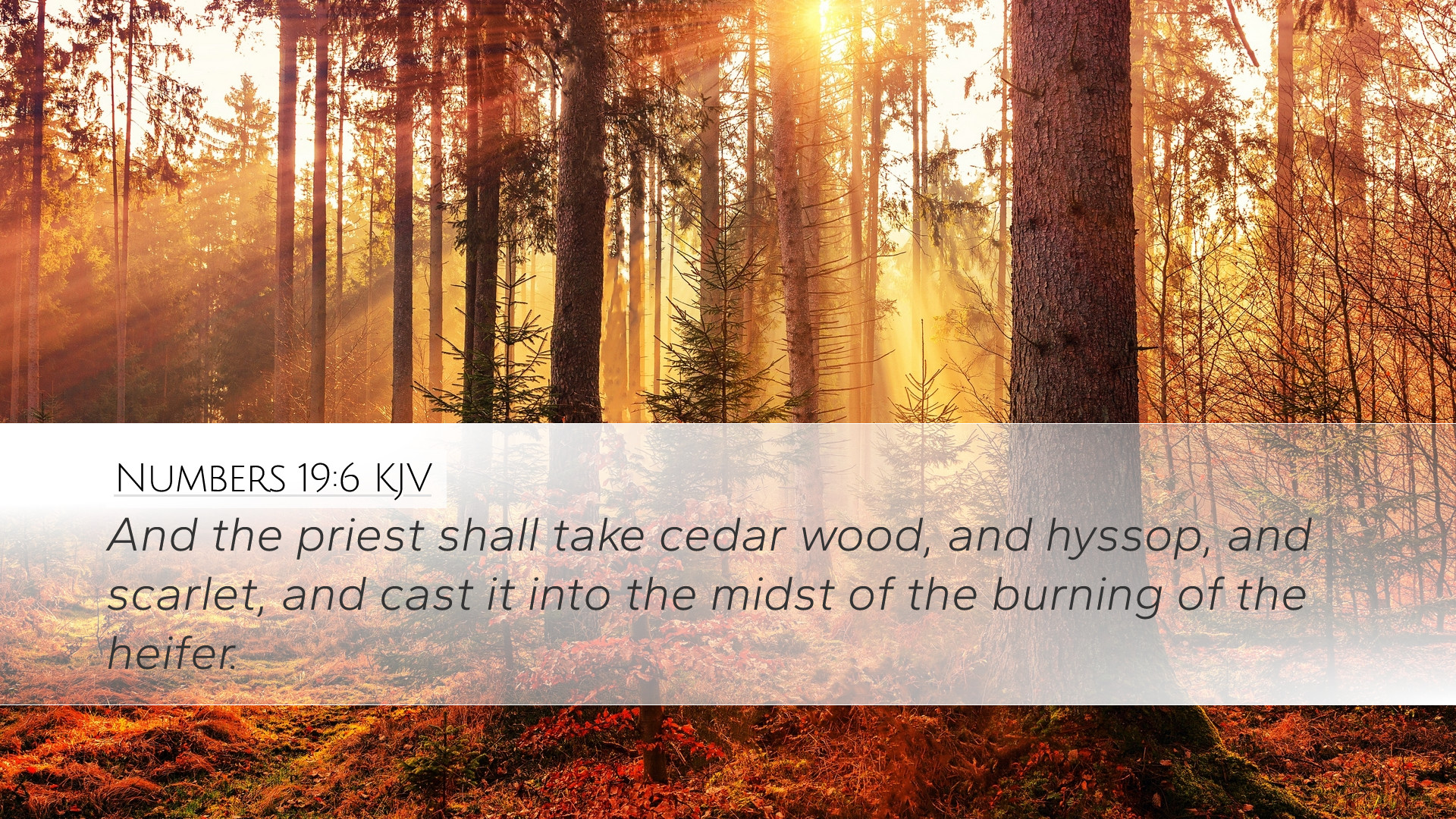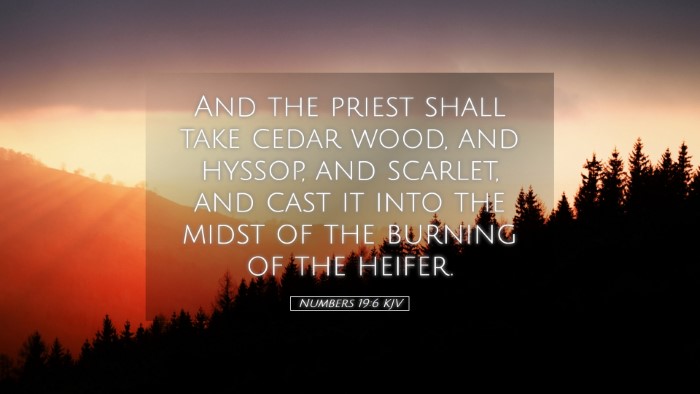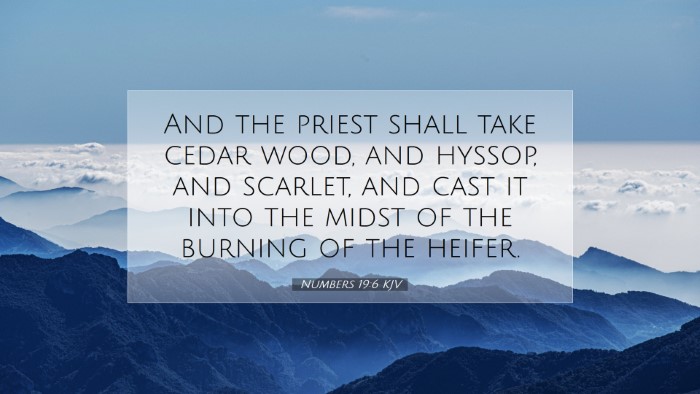Commentary on Numbers 19:6
Text of Numbers 19:6 (KJV): "And the priest shall take cedar wood, and hyssop, and scarlet, and cast it into the midst of the burning of the heifer."
Introduction
Numbers 19:6 is a key verse within the context of the instructions given for the red heifer, which plays a crucial role in the purification rites of ancient Israel. This verse details the specific actions the priest must take during this sacrificial ceremony, representing deeper theological truths. The following commentary draws insights from public domain sources to provide a multifaceted understanding of this significant passage.
Context and Significance
According to Matthew Henry, this chapter provides a ceremonial law concerning purification after touching a dead body, symbolizing both physical and ceremonial defilement. The red heifer (or cow) was to be without blemish and was a unique offering. Albert Barnes highlights that the red heifer's ashes were used in a purification ritual, which reflects the severity of sin and the necessity of atonement.
The Elements of Purification
Cedar Wood, Hyssop, and Scarlet: The combination of these materials - cedar wood, hyssop, and scarlet - in the ritual is rich in symbolism. Adam Clarke notes that cedar is known for its durability and strength, symbolizing the everlasting nature of God's mercy. Hyssop, a lowly plant, represents humility and purity; it was used in the Passover to apply the blood to the doorposts (Exodus 12:22), reinforcing its role in acts of purification. Scarlet, often associated with sin (Isaiah 1:18), also signifies the blood of atonement, illustrating Christ’s sacrifice.
Cedar Wood
Matthew Henry remarks that cedar wood signifies strength and stability. It was a favored material in construction, particularly in the building of the temple. In a spiritual sense, it may represent the strength that comes from God, able to sustain believers through trials of sin and death.
Hyssop
Hyssop has a profound biblical history, commonly associated with purification. Albert Barnes points out its use in Psalm 51:7, where David asks to be cleansed with hyssop, recognizing the need for spiritual renewal. This element symbolizes the cleansing of sin and the humble recognition of human frailty.
Scarlet
Scarlet is a color frequently encountered in Scripture, representing sin and atonement. Adam Clarke highlights that scarlet threads or cloth were used to illustrate sacrifice. The use of scarlet in this ritual emphasizes its association with blood and redemption, foreshadowing the ultimate sacrifice of Christ as the Lamb of God.
The Role of the Priest
The priest's role in Numbers 19:6 is crucial; it is he who performs the ritual and facilitates the connection between the people and God. Matthew Henry emphasizes that this signifies the mediatorial role of Christ, as our high priest who offers Himself as the ultimate sacrifice. The act of casting these elements into the fire underscores the necessity of sacrifice for atonement and the invocation of God’s presence in the ritual.
Theological Implications
- Purification and Holiness: The red heifer ritual illustrates the profound need for purity in God’s presence. Barnes mentions that approaching God requires acknowledgment of sin and the need for cleansing.
- Foreshadowing Christ: The elements and the ritual can be seen as a foreshadowing of Christ’s atoning work. According to Clarke, the shedding of Christ's blood on the cross fulfills the Old Testament promises of purification and sacrifice.
- Community Responsibility: The ritual was not just for individuals but served as a reminder to the entire community of their collective need for holiness and the seriousness of sin.
Applications for the Believer
For modern readers, particularly pastors and students, this text serves as a powerful metaphor for spiritual lives. Understanding the need for constant purification through Christ is paramount. Self-examination and humility, as exemplified by the hyssop, are crucial in approaching God. Utilizing the strength of cedar and the realization of being covered by the sacrificial scarlet lead to a more profound worship experience.
Conclusion
Numbers 19:6 encapsulates profound theological principles related to purification, atonement, and holiness. As this verse calls for the elements of cedar, hyssop, and scarlet to be cast into the flames, it reminds believers of the costly nature of grace and the profound love of our High Priest, Jesus Christ, who fulfills the requirement of the law. The insights from Matthew Henry, Albert Barnes, and Adam Clarke highlight these themes, offering a rich tapestry of meaning for theological reflection and practical application.


